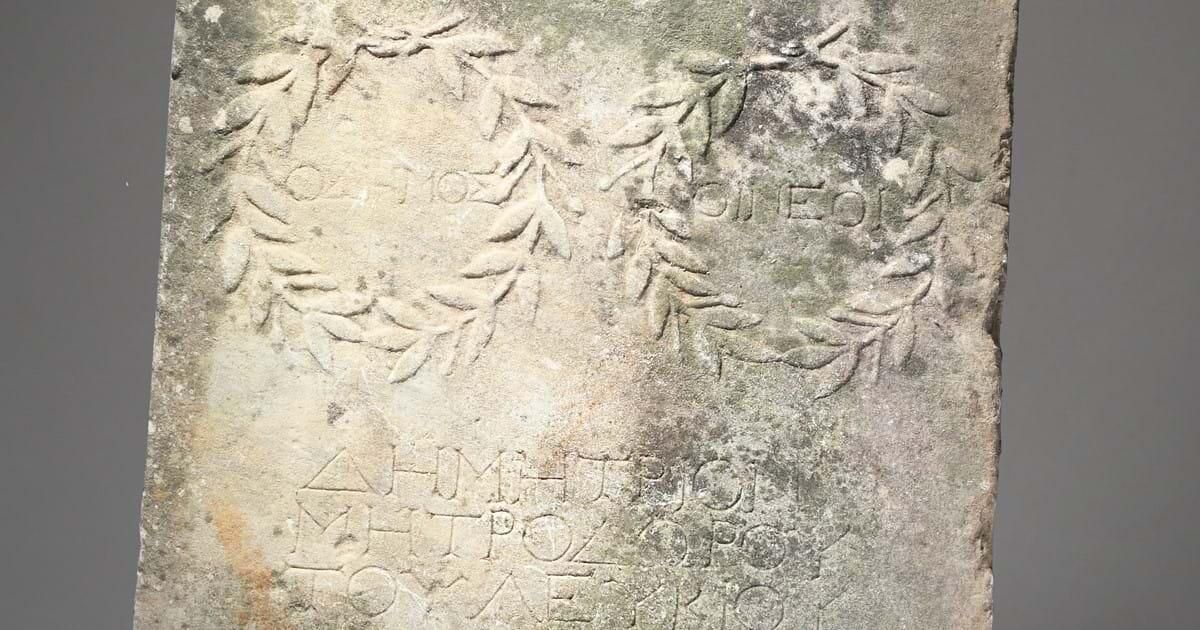
Not your typical horse mounting block.
Woolley and Wallis
A woman in England recently discovered that she was using an ancient Roman relic as a starting point to ride her horse.
The owner of a cottage in southern England found a slab of marble in her rock garden 20 years ago. I used it in its stables for nearly 10 years before the layers of dirt and moss were finally washed away enough to reveal laurel wreaths and a pattern etched onto its surface, according to the UK auction house Woolley and Wallis, Which plans to sell the slab at auction this spring for a pre-sale estimate of £ 10,000 to £ 15,000 (roughly $ 13,600 or $ 17,555 AU $ 20,400 or AU $ 26,332).
Realizing that she had not stepped on an ordinary garden rock, Woolley and Wallis consulted a local archaeologist who identified the marble slab as being from the second century, with possible origins in Greece or Asia Minor, the peninsula that today forms the Asian part of Turkey. It is 25 inches (63 cm) high, with an inscription in Greek that says: “The people (and) the young (honor) of Demetrius (son) Mitrodorus (son of) Lucius.”
Artifacts of this type often came to England as a result of Grand Tours In the late 18th and 19th centuries, when wealthy aristocrats were roaming Europe to learn about classical art and culture, Will Hobbs, an archeologist at Woolley and Wallis, said in a statement. “We assume this is how I got into the UK, but what is all the mystery is how it ended up in a home garden, and here we want to help the public.”
The bungalow where the valuable slab was found was located on the highway in the village of Whiteparish – about 100 miles west of London – and was one of several homes built in the mid-1960s. The auction house hopes that someone who lived in the area at the time or helped build the home would provide information that could shed light on the origins of the building materials.
Hobbes notes that two notable homes near Whiteparish were demolished in 1949 after the military seized them during the war. Another nearby home was destroyed in a fire in 1963, and it is possible that the rubble from there was re-used on construction sites in the area shortly thereafter.
the lesson? Next time you come across an unpretentious rock in your garden, you might want to take a closer look.

“Appassionato pioniere della birra. Alcolico inguaribile. Geek del bacon. Drogato generale del web”.

